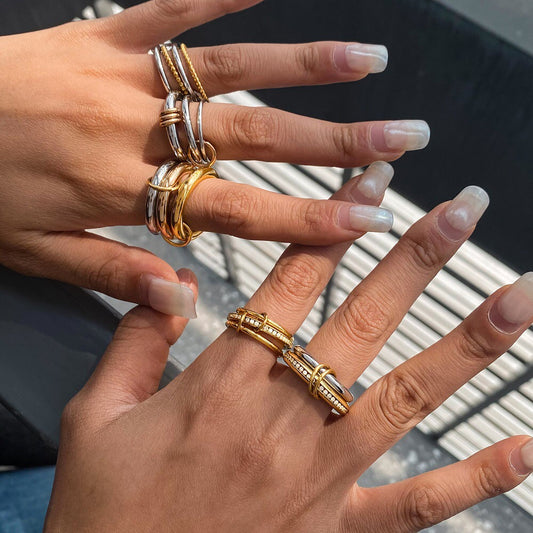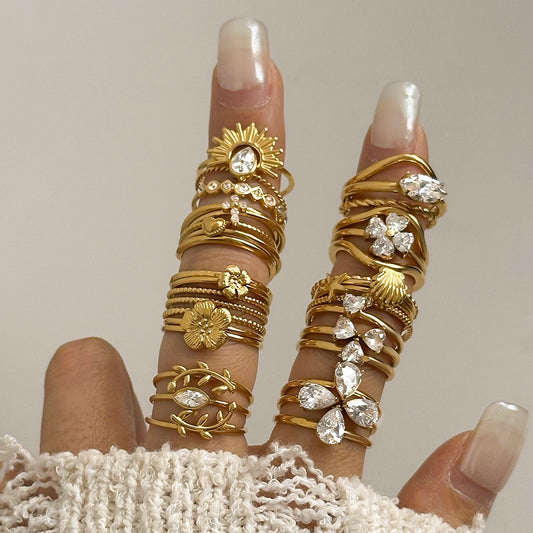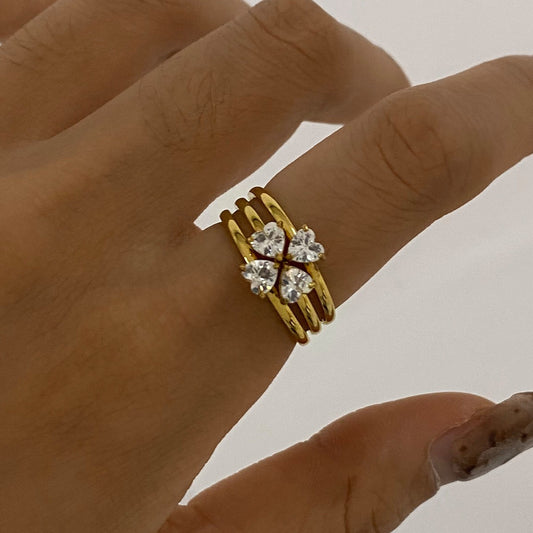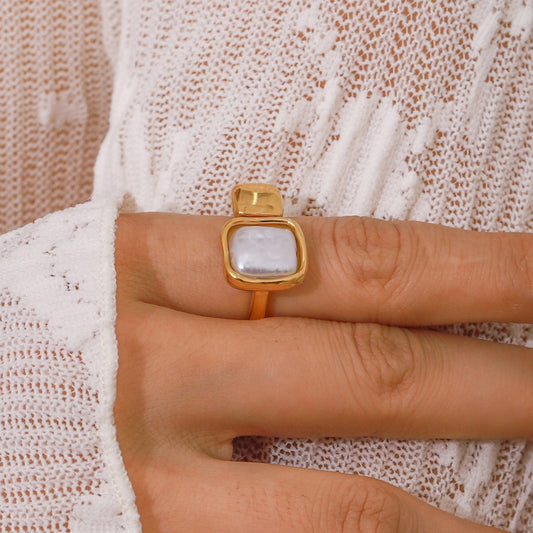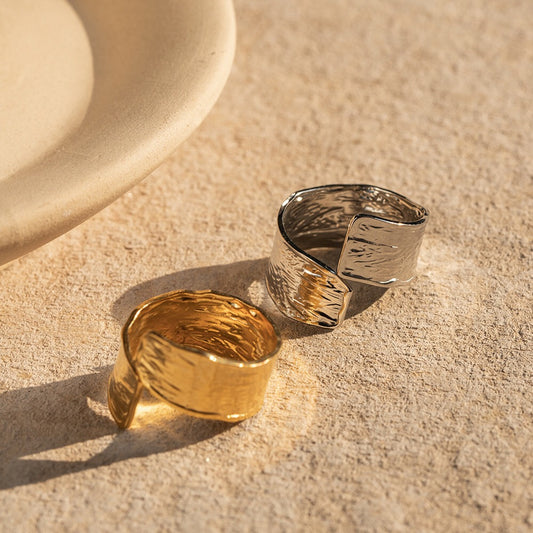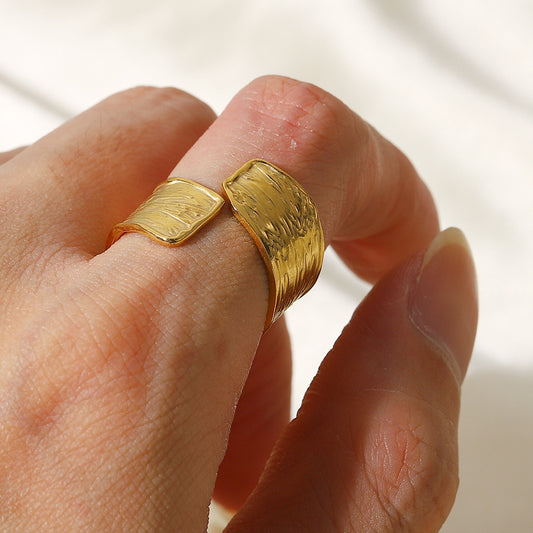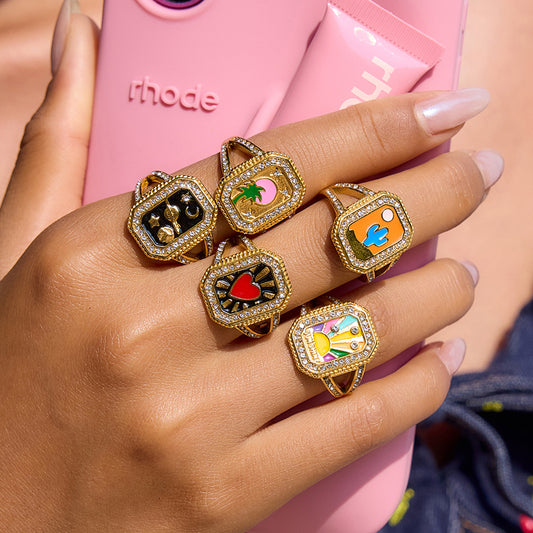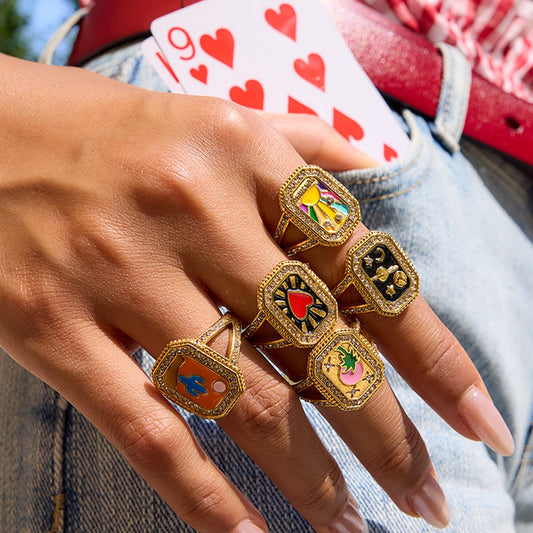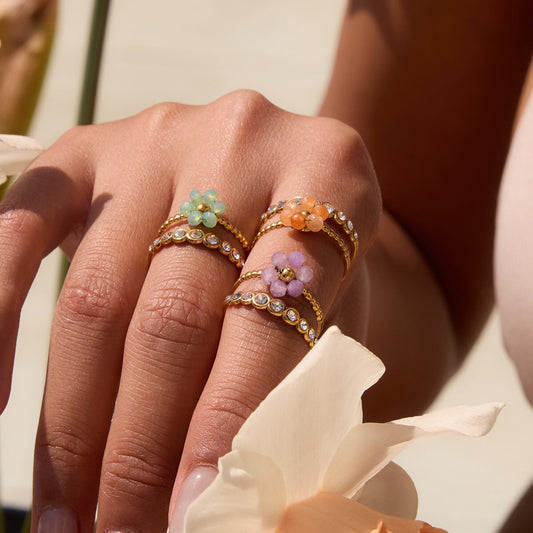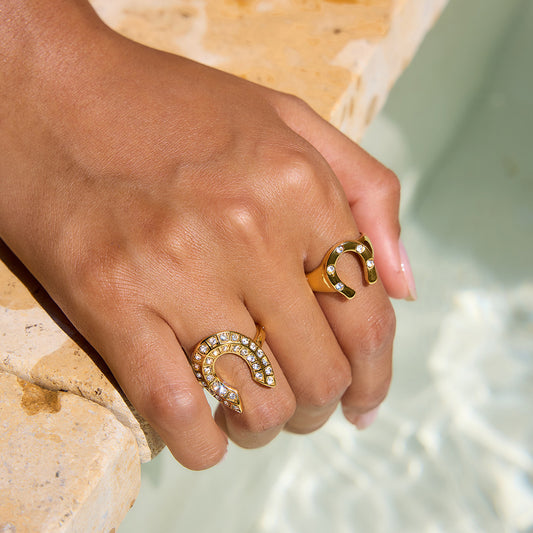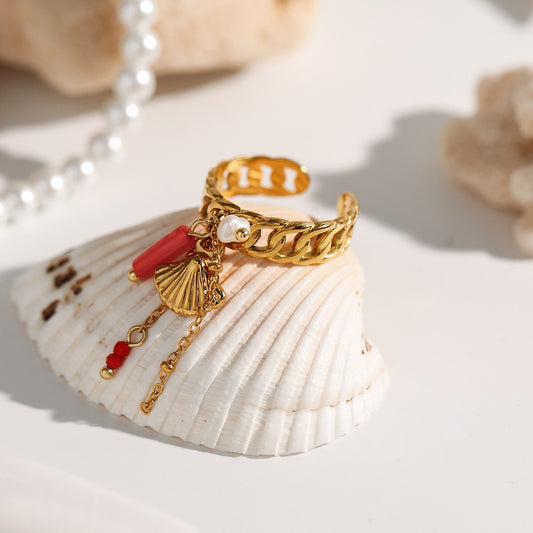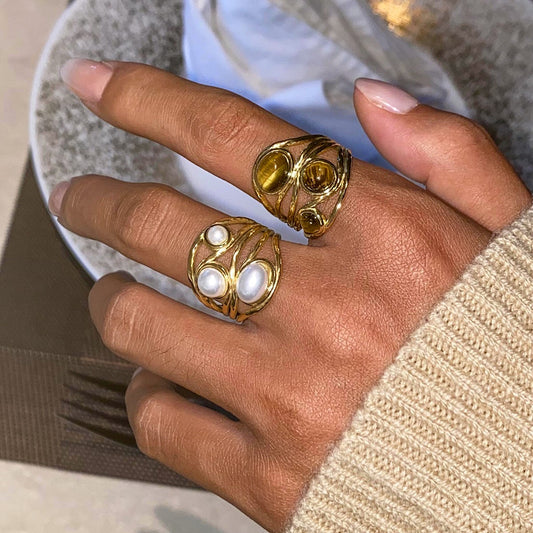Gemstone engagement rings are more than a piece of jewelry—it’s a symbol of love, commitment, and the unique story of a couple. For couples seeking something beyond the classic diamond, gemstone engagement rings offer a vibrant, personal alternative: think deep blue sapphires that evoke loyalty, rich emeralds that signify growth, or fiery rubies that represent passion. Far from being a “trend,” gemstone engagement rings have surged in popularity—the global gemstones market size was estimated at USD 101.73 billion in 2024 and is projected to reach USD 183.17 billion by 2033, growing at a CAGR of 7.0%, driven by a desire for individuality and meaningful symbolism. Whether you’re drawn to the royal legacy of sapphires, the lushness of emeralds, or the warmth of morganites, a gemstone engagement ring lets you wear your love story in color.

What Makes Gemstone Engagement Rings Special?
Gemstone engagement rings stand out from traditional diamond rings for their unique blend of symbolism, color, and personality. They’re designed to reflect the couple’s values, tastes, and shared moments—making them far more than just an accessory.
Core Traits of Gemstone Engagement Rings
-
Rich Symbolism: Every gemstone carries deep meaning—sapphires for loyalty and trust, emeralds for new beginnings and growth, rubies for passion and devotion. Choosing a gemstone that aligns with your relationship (e.g., a ruby for a fiery romance, an emerald for a love rooted in growth) adds layers of sentiment to the ring.
-
Vibrant Color: Unlike the neutral sparkle of diamonds, gemstones bring bold, varied hues to the ring. A deep blue sapphire adds regal elegance, a soft pink morganite feels romantic and modern, and a vivid peridot brings fresh, summery energy—letting you express your style through color.
-
Unique Personality: Gemstone engagement rings are less common than diamond rings, so they feel one-of-a-kind. Whether you opt for a vintage-inspired sapphire solitaire or a modern emerald halo design, your ring will stand out while telling your unique love story.
-
Versatile Style: Gemstones pair beautifully with different metals (white gold, yellow gold, rose gold) and settings (solitaire, halo, three-stone). A sapphire looks striking in white gold, an emerald glows in yellow gold, and a morganite shines in rose gold—making it easy to match the ring to your personal aesthetic.

Popular Gemstones for Engagement Rings
Not all gemstones are created equal—some are more durable, symbolic, and suited for everyday wear than others. Here are the most beloved gemstones for engagement rings, along with their unique traits:
1. Sapphire (Loyalty & Trust)
The most popular gemstone for engagement rings—thanks to its durability, timeless beauty, and royal associations (think Princess Diana’s iconic sapphire ring):
-
Color: Most famous for deep, rich blue, but also available in pink, yellow, green, and white (known as “white sapphires”).
-
Durability: A 9 on the Mohs scale (second only to diamonds), making it ideal for everyday wear. It resists scratches, chips, and wear—perfect for busy lifestyles.
-
Symbolism: Loyalty, trust, and long-lasting love. Blue sapphires are often chosen by couples who value stability and commitment.
-
Style Tips: A blue sapphire solitaire in white gold feels classic and regal; a pink sapphire halo in rose gold adds a romantic, modern twist. Pair with diamond accents for extra sparkle.

2. Emerald (Growth & New Beginnings)
For couples drawn to lush, vibrant green and a symbol of growth:
-
Color: Rich, vivid green—from deep forest green to bright grass green. The most valuable emeralds have a intense, uniform hue with minimal inclusions (known as “ jardin,” or garden, which are natural and add character).
-
Durability: A 7.5–8 on the Mohs scale—slightly less durable than sapphires, so it’s best paired with a protective setting (like a bezel or halo) to prevent chipping. Avoid wearing it during heavy chores or sports.
-
Symbolism: New beginnings, growth, and prosperity. Emeralds are perfect for couples starting a new chapter (e.g., buying a home, starting a family) or who share a love for nature.
-
Style Tips: An emerald three-stone ring in yellow gold feels vintage and luxurious; a small emerald solitaire in a delicate white gold band is perfect for minimalist tastes.

3. Ruby (Passion & Devotion)
For couples who want to make a bold, fiery statement:
-
Color: Vivid red—from deep crimson to bright scarlet. The most sought-after rubies have a “pigeon’s blood” hue (a rich, slightly purplish red) with strong fluorescence.
-
Durability: A 9 on the Mohs scale—just as durable as sapphires, making it great for everyday wear. It resists scratches and holds its color beautifully over time.
-
Symbolism: Passion, devotion, and courage. Rubies are ideal for couples with a fiery, passionate connection or who want to celebrate a love that’s bold and unapologetic.
-
Style Tips: A ruby solitaire in yellow gold feels classic and dramatic; a ruby halo with diamond accents in white gold adds modern sparkle. It pairs beautifully with both casual and formal outfits.

4. Morganite (Romance & Tenderness)
For couples who prefer soft, romantic hues:
-
Color: Blush pink to peach—warm, delicate tones that feel feminine and modern. Morganite’s color is subtle, so it works well for those who want a gemstone ring without bold color.
-
Durability: A 7.5–8 on the Mohs scale—durable enough for everyday wear, but best paired with a low-profile setting to avoid damage.
-
Symbolism: Romance, tenderness, and sweetness. Morganite is perfect for couples with a gentle, loving connection or who want a ring that feels soft and approachable.
-
Style Tips: A morganite solitaire in rose gold enhances its pink hue; a morganite halo with small diamonds in white gold adds a ethereal, romantic look. It’s ideal for minimalist or boho-inspired styles.
How to Choose the Perfect Gemstone Engagement Ring
Choosing a gemstone engagement ring is about balancing symbolism, durability, style, and budget. Follow these steps to find the ring that’s right for you:
Step 1: Pick a Gemstone with Meaning
Start by exploring the symbolism of different gemstones—choose one that resonates with your relationship:
-
Loyalty & Trust: Sapphire (blue).
-
Growth & New Beginnings: Emerald (green).
-
Passion & Devotion: Ruby (red).
-
Romance & Tenderness: Morganite (pink/peach).
-
Joy & Positivity: Peridot (green) or citrine (yellow).
Consider personal connections too—e.g., a peridot for a couple who met in August (peridot is August’s birthstone) or a sapphire for a couple who loves the ocean (blue sapphire evokes the sea).
Step 2: Prioritize Durability (For Everyday Wear)
Engagement rings are worn daily, so choose a gemstone that can stand up to regular use:
-
Most Durable: Sapphire, ruby (9 on Mohs scale)—great for active lifestyles (gym, hiking, manual work).
-
Moderately Durable: Emerald, morganite, aquamarine (7.5–8 on Mohs scale)—best for those who avoid heavy activities or who want a protective setting (bezel, halo).
-
Less Durable: Opal, topaz, amethyst (5–7 on Mohs scale)—better for occasional wear or as a second ring (not ideal for daily use).
Step 3: Choose the Right Setting & Metal
The setting and metal can enhance the gemstone’s beauty and protect it:
-
Settings:
-
Solitaire: Highlights the gemstone’s color and shape—perfect for bold gemstones (ruby, sapphire) or minimalist tastes.
-
Halo: Adds sparkle with small diamonds around the gemstone—great for smaller gemstones (morganite, peridot) or those who want extra shine.
-
Three-Stone: Features a central gemstone with two smaller stones (diamonds or other gemstones)—symbolizes past, present, future. Ideal for couples who want to add personal meaning (e.g., birthstones of family members).
-
Metals:
-
White Gold: Enhances cool-toned gemstones (blue sapphire, aquamarine) and adds a modern, sleek look.
-
Yellow Gold: Complements warm-toned gemstones (ruby, morganite, citrine) and feels classic, vintage-inspired.
-
Rose Gold: Pairs beautifully with pink/peach gemstones (morganite, pink sapphire) and adds a romantic, trendy vibe.
Step 4: Set a Realistic Budget
Gemstone engagement rings vary in price based on the gemstone’s rarity, size, and quality:
-
Budget Under $2,000: Small sapphires (0.5–1 carat), morganites (1–2 carats), or peridots (1–2 carats) in simple solitaire settings (sterling silver or gold-plated).
-
Budget \(2,000–\)5,000: Medium sapphires (1–1.5 carats), rubies (0.5–1 carat), or emeralds (0.5–1 carat) in halo or three-stone settings (14k gold).
-
Budget Over $5,000: Large, high-quality sapphires (2+ carats), rubies (1+ carats), or emeralds (1+ carats) in custom settings (18k gold) with diamond accents.
How to Style & Care for a Gemstone Engagement Ring
A gemstone engagement ring is a lifelong piece—here’s how to keep it looking beautiful and style it with confidence:
Styling Tips
-
Everyday Wear: Pair your ring with minimal jewelry to let the gemstone shine. A sapphire or ruby ring looks great with a simple gold band on the same finger; a morganite ring pairs with delicate silver earrings. Avoid stacking bulky bracelets on the same wrist (they can scratch the gemstone).
-
Formal Occasions: Enhance the ring with complementary jewelry. A ruby engagement ring pairs with diamond drop earrings; an emerald ring works with a small emerald pendant necklace. Stick to metals that match the ring (e.g., yellow gold jewelry with a yellow gold emerald ring).
-
Casual Outfits: A gemstone ring adds a pop of color to jeans and a t-shirt, a sundress, or a sweater. Let it be the focal point—avoid other colorful jewelry that might compete.
Care Tips
-
Daily Care:
-
Remove the ring before activities that could damage it: swimming (chlorine fades metal and damages gemstones), cleaning (harsh chemicals scratch gemstones), working out (sweat can discolor metal), or gardening (dirt and debris can get stuck in the setting).
-
Wipe the ring with a soft microfiber cloth after wearing to remove oil, lotion, or dirt.
-
Deep Cleaning:
-
Clean the ring every 2–3 months with warm, soapy water (mild dish soap) and a soft-bristled toothbrush. Gently scrub the gemstone and setting to remove buildup—avoid harsh scrubbing (it can damage emeralds or morganites).
-
Rinse thoroughly and pat dry with a soft cloth. For sapphires or rubies, you can also use a jewelry cleaner (avoid ammonia-based cleaners for emeralds, as they can damage the stone).
-
Storage:
-
Store the ring in a soft jewelry pouch or a divided jewelry box (separate from other jewelry to prevent scratches).
-
Avoid storing it in direct sunlight (some gemstones, like morganite or peridot, can fade over time).
-
Have the ring inspected by a jeweler once a year—they’ll check the setting for loose stones and polish the metal to keep it shiny.
Frequently Asked Questions About Gemstone Engagement Rings
Q1: Are gemstone engagement rings less valuable than diamond rings?
A: Not necessarily—high-quality sapphires, rubies, and emeralds can be just as valuable (or more valuable) than diamonds, especially large, rare stones. Value depends on the gemstone’s rarity, color, clarity, and carat weight. Plus, gemstone rings offer something diamonds don’t: unique symbolism and color.
Q2: Can a gemstone engagement ring be resized?
A: Yes—most gemstone engagement rings can be resized, but it depends on the setting and gemstone. Solitaire settings are easiest to resize; halo or three-stone settings may require more work (to avoid damaging the setting or gemstone). Always have resizing done by a professional jeweler who specializes in gemstones.
Q3: Are gemstone engagement rings suitable for people with sensitive skin?
A: Yes—choose a ring with hypoallergenic metal (14k or 18k gold, sterling silver, or platinum). Avoid nickel-plated metals (they can cause irritation). Most gemstones are hypoallergenic, but if you have sensitive skin, test the metal before buying (ask the jeweler for a sample or wear the ring for a day to check for reactions).
Q4: Will the gemstone’s color fade over time?
A: Most gemstones (sapphires, rubies, emeralds) are colorfast and won’t fade with proper care. Some softer gemstones (morganite, peridot) may fade slightly if exposed to prolonged direct sunlight—store them in a dark place and avoid wearing them in intense sun for long periods.
Q5: Is a gemstone engagement ring a good choice for a non-traditional couple?
A: Absolutely! Gemstone engagement rings are perfect for couples who want to break from tradition and express their unique style. Whether you’re drawn to bold color, meaningful symbolism, or a one-of-a-kind look, a gemstone ring lets you celebrate your love in a way that feels true to you.
Conclusion: Gemstone Engagement Rings—Love in Color
Gemstone engagement rings are more than a ring—it’s a celebration of your unique love story. Unlike traditional diamond rings, which follow a one-size-fits-all mold, gemstone rings let you choose a stone that reflects your values, your connection, and your style. Whether you’re wearing a deep blue sapphire that symbolizes your trust, a lush emerald that represents your growth, or a fiery ruby that mirrors your passion, your ring will be a daily reminder of the love you share.
In a world where so much feels the same, a gemstone engagement ring stands out—not just for its beauty, but for its meaning. It’s a choice that says, “Our love is unique, and so is this ring.” So whether you’re planning to propose or dreaming of your own engagement ring, consider a gemstone—because love deserves to be worn in color.






